Truth & Goodness
Cameras, Scans, and Digital Wallets: Privacy Becomes a Luxury
04 January 2026
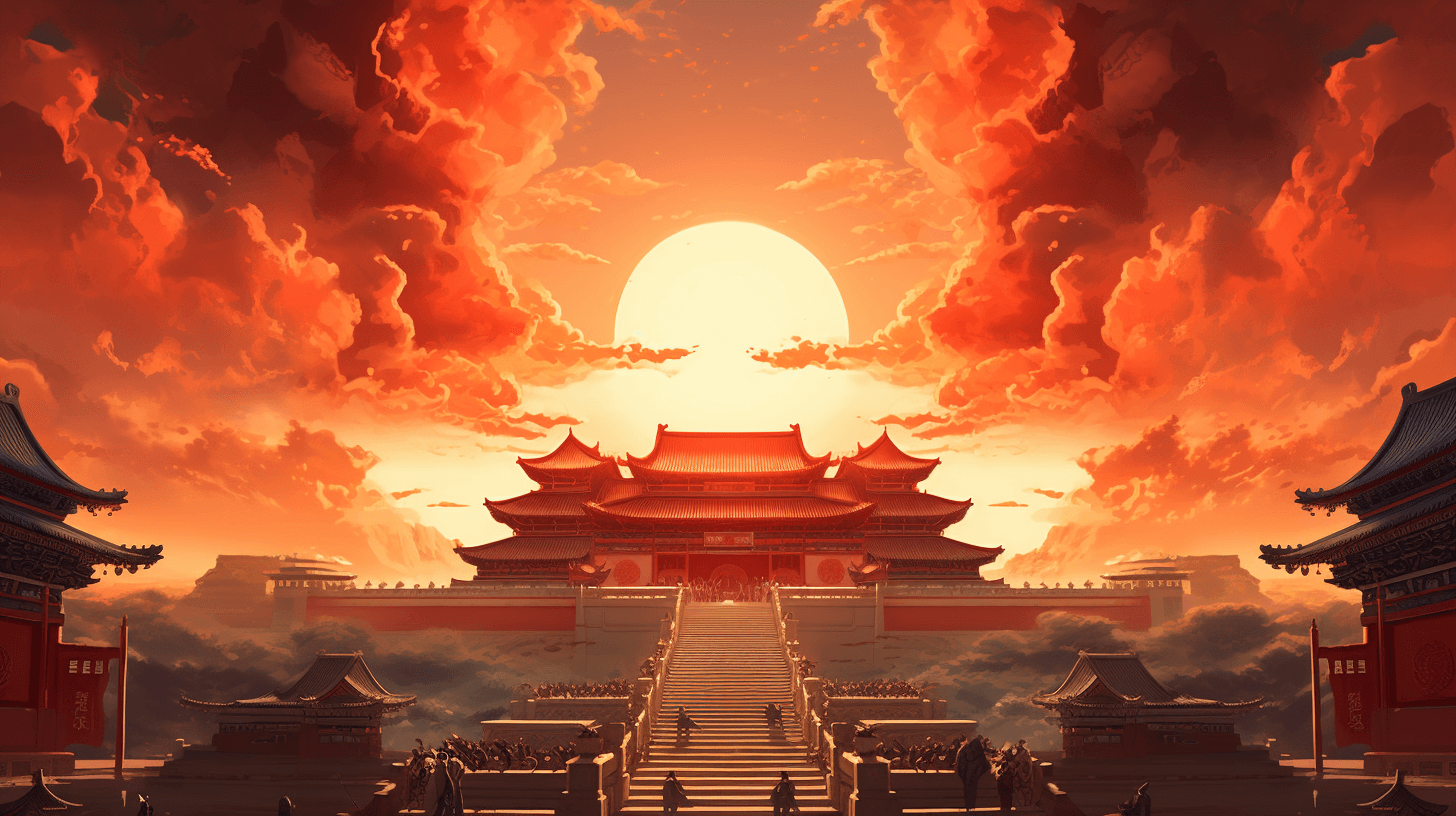
The Chinese state has entrenched itself deeply within the basic social structure and has never been considered as something external, cut off from the family sphere. The European tradition places a considerable focus on questioning the bureaucratic apparatus, challenging authority, and setting up boundaries beyond which officials are prohibited entry.
The Chinese point of view is different – explains Dr. Igor Chabrowski, a historian from the University of Warsaw specializing in Chinese history.
What are the key, fundamental elements that have built the Chinese world?
First of all, the state. In China, the state has ‘always’ had a very specific role. Culture has also had very close links to the state, and the state itself has deep religious roots. The earliest historically confirmed Chinese state of the Shang dynasty, dating back to the second millennium BC, had its own official god. The worship of Di – the ‘supreme ancestor’ or ‘supreme ruler’ – was a state cult. Emperors made offerings to the deity, and religious ritual was embedded in the fabric of the Chinese state. The Zhou dynasty, which came after, strengthened this belief system even further. The supreme god was Tiān, which can be translated as ‘Heaven’. The Heavens were the highest deity and held in great reverence – the source of universal order, both natural and moral. The emperor was the Son of Heaven and needed the Mandate of Heaven to rule. This resulted in a very intense relationship between the state and the entire cultural sphere within its boundaries. It was the state that had a decisive influence on material culture, religious worship, and the organization of social life. Crucially, the state was not the product of a single ethnic group. The Chinese imperial state was a synthesis of diverse elements, which were ‘fused’ together to form a whole. Even the first Shang kingdoms were not associated with any particular ethnic or regional group. Instead, they gave rise to a brand-new imperial ‘quality’ that was founded on two aspects – shared religion and the royal clan. The Chinese emperor acted as an intermediary between the Heavens, the world of deities, and the Earth, the world of people. To a large extent, he operated as a religious figure. This fact sets China apart from Europe’s historical experience. Even in Byzantium, where the relationship between the empire and the Church was powerful, the ruler and the state did not have such a strong religious sanction as was the case in China. Western civilization witnessed various faiths competing against each other, sometimes through military engagement. In China, the religious order was much more syncretic and flexible. It absorbed many local traditions, which, after a while, merged into a fairly common set of beliefs and ideas. When the empire under the Zhou dynasty fragmented into many states of various sizes, the idea of being part of a community survived. It was recognized as binding together everyone with a very similar set of religious traditions and beliefs that were expressed in rituals.
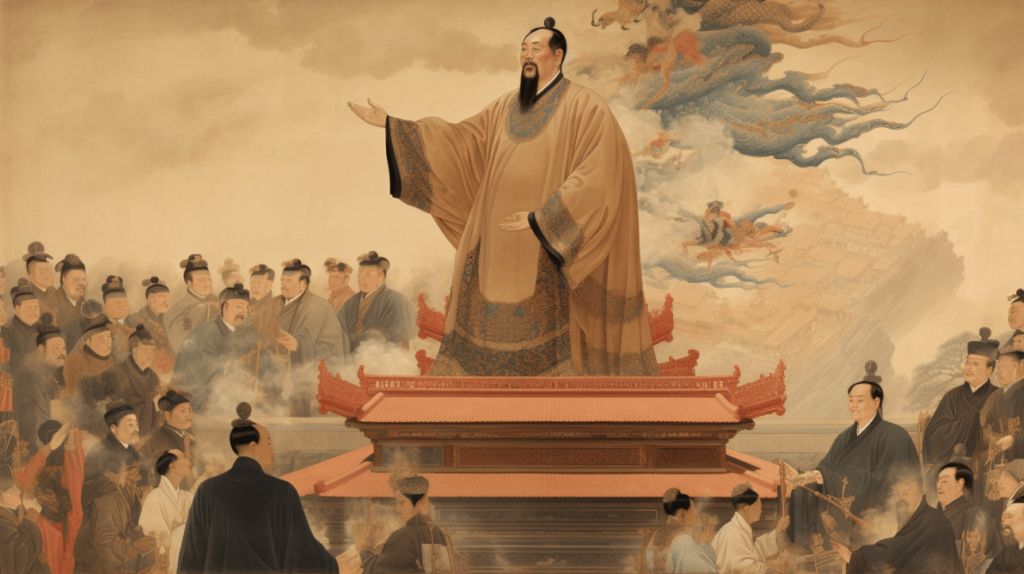
A state is not only a set of shared traditions and beliefs but also a very tangible administrative structure. Was it more expansive in China than in Europe?
Without a doubt. The Chinese state developed its administrative structures very early on, and they were much deeper than in Europe. The bureaucratic apparatuses of the Hellenistic kingdoms or the Roman Empire were well-developed, but in China the role of the state was even more fundamental. The Chinese state played an active role in a wide variety of areas – it built mines and roads, dug canals, divided fields, introduced urban order, managed the population… The state even assessed the talent and knowledge of those who could prove useful to the entire community as officials. In ancient times, state examinations did not have a formal structure; however, from the tenth to the twentieth century a very elaborate system of tests had to be followed by candidates keen to take official posts. Apart from assessing the level of knowledge, the tests focused on the ‘moral quality’ of the individuals – their skills, their ability to express themselves, their habitus, and their manner of living in society. It would be futile to look for such a phenomenon in Europe. Up to a certain point, the Church fulfilled the function of creating intellectual and official elites, but it was not, strictly speaking, a state. No Church could decree that a canal be dug to link the Vistula River with the River Spree or order that every town in Europe be given an identical layout.
The Chinese state infiltrated the basic social structure very deeply. The sphere related to governance corresponded to the sphere that belonged to the family or clan. Both these realities intermingled and coexisted with each other. The state has never been considered as something external, cut off from the family sphere. The European tradition places a considerable focus on questioning the bureaucratic apparatus, challenging the authority, and designating areas beyond which officials are prohibited entry. We look at the construct of the state without conviction, with distrust. The Chinese point of view is different.
Some sinologists argue that the concepts of human rights and individual freedom operating in our cultural circle are rooted in the concept of God the Creator, before whom all humans are equal. For this reason, the Chinese, who do not know a God who created mankind, view the role and importance of the individual differently from us. Is this actually the case?
In China, irrespective of all historical transformations, defining a person according to family and clan affinity is a fundamental approach to defining a person. Individuals are defined in a relational way based on their relationship to other members of their family or clan.
What does this mean?
Let us imagine a multi-generational family whose individual members relate to each other in a specific, ritualistic way, which is associated with the relationship they share. A father behaves in a certain way towards his wife, son, daughters, and relatives. The wife does the same, just as the eldest son, the younger sons, and daughters. The relations between the family members are strictly defined and translate into a whole series of prohibitions and expectations that, when fulfilled, bring harmony to the family environment. Hovering over everything are the spirits of the ancestors, who keep a close eye on what their descendants are up to. The spirits are kept up to date with all family matters – weddings, births, failures and achievements. The living also ask them for advice and opinion.
This ‘relationship map’ shows everyone their place within a family system, encompassing both the temporal and supernatural world.
Families, of course, establish links with other families; they are part of wider clans. The ritual also regulated appropriate behaviors towards members of affiliated families, representatives of one’s own clan and unfamiliar clans. Such networks could potentially comprise dozens or even hundreds of people. An individual has obligations towards them, but they also have obligations towards the individual. A person accepts their place in the family and society and acts in such a way as to best fulfill the role implied by their position in relation to others. In China, a person, in legal terms but also in moral and social terms, was the product of relationships operating within the sphere of family life. The state protected and promoted these relationships. In fact, the state itself was a gigantic clan system.
Importantly, relationships imply a hierarchy. The father has a more important position than the son. An older brother means more than a younger brother. An official expects respect. The ruler demands the highest respect. Confucius wrote: ‘Let the ruler be a ruler, the minister a minister, the father a father, and the son a son’ – which means that everyone should fulfill their role of subordination and supremacy and all the associated responsibilities in the best and most appropriate way possible. Therefore, the sense of freedom and equality of individuals depicted in 18th-century European Enlightenment writing is met with the following approach in China: we must not forget hierarchy because we are in relationships with other people. And there cannot be absolute equality in relationships between people.
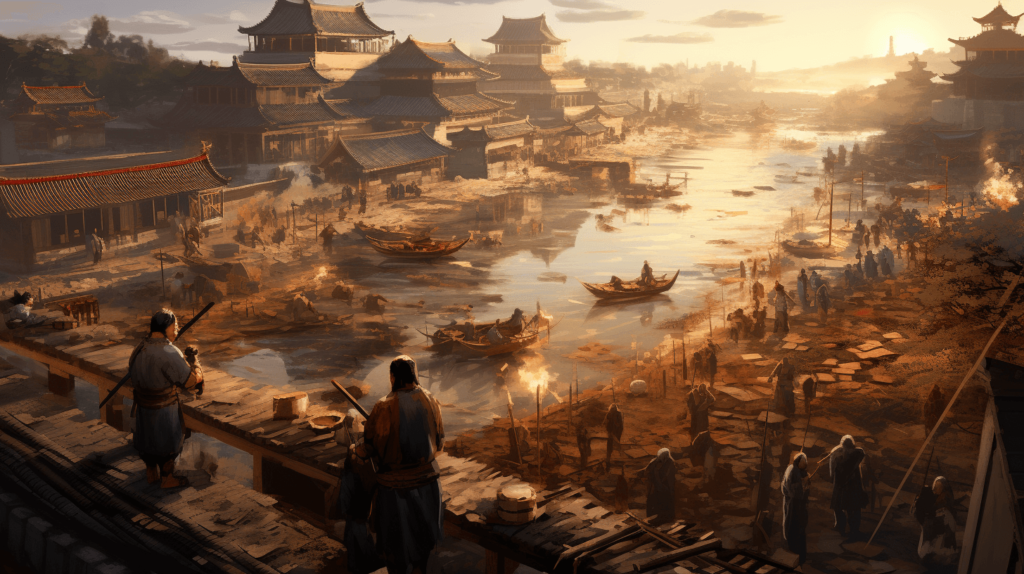
You mentioned Confucius, whose teachings have left a lasting imprint on the Chinese state and society. What are the key Confucian concepts?
Confucianism, like most Chinese philosophies, was the result of discussions about the concept of the state. From the eighth century BC onwards, the Zhou dynasty state began to fragment into smaller organisms, which then proceeded to engage in military conflicts with each other. In Chinese history, this period is known as the Era of the Warring States. At that time, many thinkers began to scrutinize the nature of an ideal state – with the assumption that such a state existed in the ‘heavenly’ Zhou era. Confucius himself lived in the late sixth and early fifth centuries BC in the tiny state of Lu. He was a scholar, recording the history of his state and of the entire cultural tradition of the time. His works contained a moral message, which he considered fundamental. Reflections on history, tradition, ethical aspects, the moral order, relationships between people and the issues linked to the functioning of the state all played a crucial role in Confucianism.
Those who continued to develop the teachings of Confucius stayed in the shadows until the middle of the second century BC. Between the various priests, shamans, counselors and thinkers, they were regarded as fairly marginal specialists in rituals. In turn, they considered themselves custodians of ancient ceremonies that were supposed to function in the courts of the ideal rulers of the eleventh century BC. They claimed that if court rituals were suitably adhered to, the world would be organized according to the best possible order. Everyone would know their place in society, understand relationships with other people and fulfill their obligations resulting from these responsibilities. No one would need to be ruled because everyone would know how to act thanks to the ritual. Emperor Wu (late second and early first century BC) of the Han Dynasty recognized that Confucianists and their teachings could be useful. He awarded them a due position within the court structure, where they became the go-to authorities in court protocol. The rituals, ancient yet considered authentic, became the central focus of court life.
The second branch of Confucianism involves studying the achievements of the master and his disciples. As the rituals performed in accordance with the Confucian thought gained in importance, so too did the works they left behind. The core set of Confucian works has entered the literary canon, and every educated person should become acquainted with these writings. Until the 12th century, various editions of these texts were used, supplemented with different commentaries to facilitate their understanding and interpretation. Only the commentaries by Zhu Xi, a scholar who lived between 1130 and 1200, were accepted as ‘canonical’ and used until the 20th century. Linguistic and philosophical deliberations on the meaning of Confucian writings, their interpretation and critique have developed into an academic discipline. The study of these texts became the source of Chinese philology and scientific research. Vocabulary or expressions taken from Confucian writings became carriers of meanings of fundamental importance in China and were also used as quotes in everyday life. Confucianism also existed and continues to exist as a form of religious life. Temples were built dedicated to the worship of the master, which also functioned as academies, forming the elites of the state. The link between the cult of Confucius and the state became particularly strong from the tenth century onwards, with the introduction of official state examinations. All major cities saw the establishment of temple-academies, which aimed to educate those willing to study.
What is the moral teaching of Confucianism?
According to Confucius, a perfect individual should be characterized by two qualities – Ren and Li. The first term stands for benevolence, and it is understood as restraint, modesty, reasonableness, impartiality, decency and the ability to recognize evil. Li, in turn, is a set of obligations and rituals fulfilled by the person characterized by the virtue of Ren. It is acting in compliance with the relevant principles and customs, as well as observing the protocol. Li stands for respecting the three essential human bonds with other people. These bonds are between: father and son, husband and wife, and lord and retainer. Other Confucian virtues include: Yi – justice and righteousness, Zhi – wisdom and knowledge, and Xin – honesty and keeping one’s word, which can also be described as trust. This gives us Three Fundamental Bonds and Five Constant Virtues.
Confucianism teaches that human beings are to behave in a certain way within the framework of basic social relations and to adhere to values that resemble those that are also professed by the followers of Christianity or Islam. As you can see, the Chinese way of looking at the world is not highly distinctive. If one was looking for a particular feature, it would be ritual. The Chinese world was incredibly ritualized. Meticulously defined conduct had an enormous meaning in every aspect of social life. People demonstrated respect for each other by referring to one another in a certain way. Today, such an approach is still relevant in China. If you meet a Chinese colleague, you will find him to be the most polite person in the world. He will serve you tea, sit you in the place of honor and take care of you. In China, a person you meet in a bar may consider you a friend and say: change your train reservation, wait until tomorrow, I’m inviting you to my place, let me just call my wife so that she prepares a special dinner. Behavior of this type is unheard of in the West. If you know enough of the language to communicate with the Chinese, they will immediately want to build you into their community by showing you a great deal of respect. Much has changed in China in the 20th century; however, the importance of ritual in human relations and the recognition of their hierarchical nature have endured.
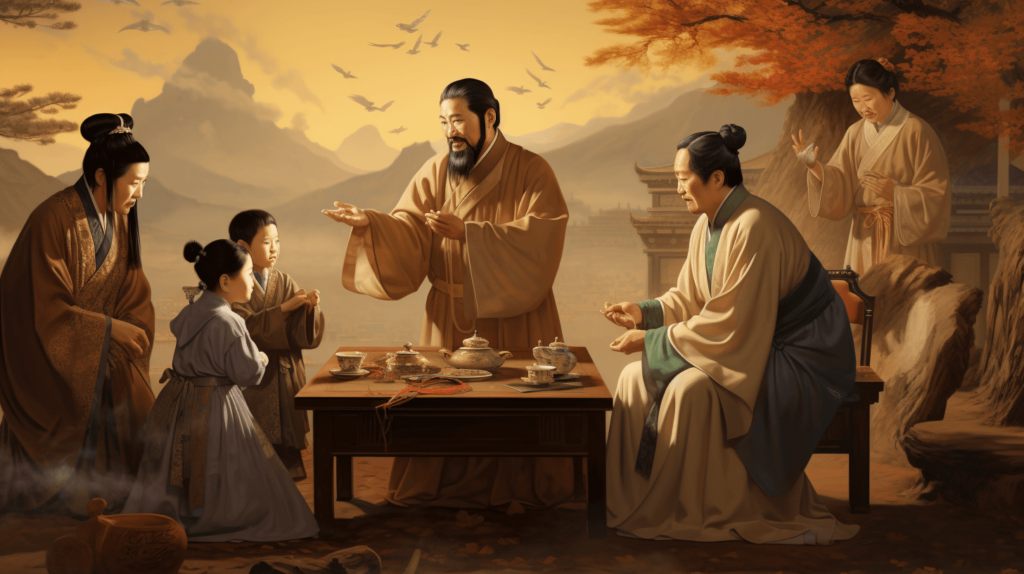
And on that note – how much has the Chinese Communist Party’s rule changed China and the Chinese people?
Communism in China had many faces, but in terms of social change, Mao Zedong’s reforms, and above all land reform and collectivization, had the most significant consequences.
About one thousand years ago in China, peasants began to be granted ownership titles to land. There was a market for trading land as well as huge plantations and small farmsteads. Under Mao’s land reform, the land of wealthy farmers was redistributed to poor peasants. However, not long after, in 1955, collectivization of agriculture was ordered and in 1957 the creation of peasant cooperatives. Within three months, 99% of China’s farms were forcibly incorporated into state-operated communes. It goes without saying that collectivization butchered the specific character of the countryside that was accustomed to individual working of the land, contact with nature, small-scale handicraft, and all the associated social institutions. This and many other Maoist ideas began to be scaled back after the death of the leader in 1976. The land remained state-owned, but a system of 30-year leases was introduced. This gave ground to the resurgence of individual farming.
The reforms of the pragmatic Deng Xiaoping, which opened the country to the world and gradually implemented a market economy, changed China beyond recognition. After the period of Mao’s ideological frenzy, the party said to the people: you can make money and do business. And this is exactly what the Chinese did. Today, Chinese society is highly commercial. Definitely more so than during the imperial era.
The obvious change that occurred in China in the 20th century was the installation of a new ruling group. China is currently ruled by the Chinese Communist Party (CCP), fulfilling bureaucratic and political functions, which came to power after the civil war with the Kuomintang nationalists. Party affiliation continues to play a crucial role, impacting numerous aspects of daily life. Many Chinese are convinced that party membership is a prerequisite to building a career. At any rate, after many experiments, including those that ended in complete failure, the communists have succeeded in modernizing the country. Under Mao, China was an autarkic and centrally controlled economy. Access to consumer goods was extremely limited, although slow progress was nonetheless being made. Heavy industry was created, transport developed, life expectancy increased very significantly despite the Great Chinese Famine, and the population doubled. At the start of the 1980s, when the CCP began to reform the communist country with carefully dosed capitalist prescriptions, the country started to develop at an incredible pace not seen anywhere else in the world. Until 2008, China’s year-on-year GDP growth exceeded 10%. Unprecedented progress was made in all sectors: industry, commerce, finance, construction, transport, energy, education… Modern infrastructure was built, cities were transformed, the world’s largest high-speed rail network was constructed, and innovative industries were developed. The Chinese continue to run their space programme, building the world’s largest nuclear and hydroelectric power plants, building global brands, and investing all over the world. China is the world’s second economy, and everyone wonders just how long the country will maintain this rate of growth. I would be cautious in giving full credence to all the statistics reported by the Chinese authorities, but it is undeniable that China has made incredible achievements in numerous areas. Since 1949, China has grown from a semi-feudal, backward state to a global giant.
Has the Chinese Communist Party taken steps to ensure the prosperity of the country and its people, just like the emperors many centuries ago?
Each dynasty cared most about the imperial clan. In this respect, the CCP is effective. Mao Zedong or Deng Xiaoping believed that regardless of the circumstances, the survival of the communist power base was paramount. The CCP has a monopoly on power and has so far successfully pacified any movement that could – even potentially – put it at risk. It is also important to remember that there was no single model of the Chinese empire. Although the states ruled by subsequent dynasties had many things in common, they were all different from each other. The first kingdoms were cultural communities of a sort, centered around the religious role of the ruler and relevant rituals. The dynasties that ruled the empire from the third century BC to roughly the 17th century built highly interventionist states. As mentioned previously, they used a bureaucratic apparatus to organize the entirety of economic life. The Manchurian empire of the Qing dynasty, in turn, demonstrated a laissez-faire approach. As time went on, it became increasingly invisible in terms of organizing the economic activities of the state. It privatized many of its estates, built a huge market and allowed businesses to operate freely. The state granted concessions and limited its interference to collecting taxes at affordable rates.
The new model of the state, which coincides with the CCP’s actions, has its origins in the reforms undertaken from the mid-19th century (after the devastating Taiping Rebellion). These reforms intensified after China lost to Japan in the First Sino-Japanese War (1894–1895) and after the rise of the so-called Boxers during the Boxer Rebellion (1899–1901), which saw the siege of Beijing by soldiers of the Eight-Nation Alliance. At that point, it was recognized that since Japan was able to defeat China through the adoption of the Western model, China should do the same. China began to modernize by building economic institutions, banks, and the capital market. Taxes were increased, state-owned companies were established, and a program of industrial and infrastructure investments was launched. The usefulness of the ancient teachings and the entire bureaucratic system built on their foundations were questioned. The reformers saw the state as an actor that actively organized social and economic life. After the collapse of the empire and a period of chaos, the Kuomintang nationalists took control of most of China in 1928. And they essentially reverted back to the agenda applicable in the last decades of the empire. The state was supposed to be powerful and efficient. It was supposed to be authoritarian and led by an enlightened political group that would organize social life and manage all the constituent segments of the state.
The CCP is embedded in the same tradition. From the moment they took power, Chinese communists have been continuously looking for a way to comprehensively modernize the country. Mao Zedong was at one point fascinated by Joseph Stalin, but after a period of copying Soviet models, he abandoned them in favor of his own experimentation. He was known to be exceptionally radical in this pursuit. As a rule, he believed that the most radical solution was always the best. Deng Xiaoping acted differently, and his principle stated that ‘it didn’t matter what color the cat was – what mattered was that it caught mice’. The changes made had an evolutionary character – the most successful reforms developed in the form of a local experiment were then implemented across the entire country.
Although this modus operandi was successful, in my opinion, the CCP is currently at an impasse and does not know which direction to take. Xi Jinping, who is the general secretary of the party and ‘state chairman’, has personally taken hold of a very large amount of power. He brought about the marginalization or break-up of rival party factions using the largest anti-corruption campaign in the history of the PRC. The intensity of state propaganda has transgressed all boundaries, the official message makes direct references to revolutionary, Maoist themes, censorship and control over society continue to be reinforced, and the country is becoming increasingly insular. The party seems to display signs of some sort of ideological awakening; however, it is more than likely that these are symptoms of its weakness. Any fundamental reforms were brought to a halt in 2008. China finds itself in debt, the economy is overheated, the society is aging, and the state has failed to achieve the level of prosperity enjoyed by developed nations around the world. I believe that the elite circles of the CCP are apprehensive about China’s ability to maintain its current growth rate. Those in power also realize that the geopolitical ‘window of opportunity’ that was thrown open during the globalization era seems to be closing. China is aware that it has enemies, and in the event of an armed conflict with the world’s major powers, China’s victory is not guaranteed. And this could spell the end of the CCP’s rule.
Nevertheless, it is China that is stoking the international atmosphere with announcements of Taiwan’s imminent annexation into the PRC. Is reclaiming Taiwan really that important to the Chinese elites?
According to Xi Jinping, the reclamation of Taiwan is crucial to the fundamentals of the Chinese state and will represent China’s symbolic regaining of its superpower status. The elementary question is: why is Xi Jinping intensifying the debate around Taiwan with these announcements? No one knows the answer, so one can only speculate.
Perhaps he is doing so in order to garner an excuse to reform China’s military and mobilize the necessary resources. An assertive stance of the state in international politics always leads to a gigantic increase in military spending. This is when money starts flowing to the industrial and interconnected scientific sector. If such a state of tension persists, a self-perpetuating machine would be created and propelled with endless financing. If this scenario is true, China will never move onto Taiwan. Because the longer the conflict is postponed, the longer the military-industrial-scientific sector can flourish: with increasingly capable aircraft carriers, planes, missiles and satellites being built. In this hypothetical scenario, China’s rearmament efforts would be a response to the country’s developmental crisis. And the tensions around Taiwan would only be the pretext for engaging in such activities.
The second answer concerns the strategic position of China, which has been surrounded by the United States and its allies since the Korean War. America has bases in Taiwan, Japan, South Korea, the Philippines, Singapore, Thailand, and Australia while also controlling shipping lanes crucial to China’s economy. This may inspire a sense of insecurity and a desire to improve the country’s strategic position, i.e. to push back the U.S. From this point of view, the optimal scenario for Beijing would be a peaceful takeover of Taiwan; however, this seems highly unlikely. This is because China made a complete mess of Hong Kong’s takeover. If the Chinese succeeded in working out a model where organisms with different political cultures and varying degrees of civil liberties could coexist within a single state, Taiwan could consider some form of unification or cooperation with Beijing. Meanwhile, the outright suppression of protests in Hong Kong and the introduction of the National Security Law in 2020, which stifles freedom of expression, have made it difficult to imagine any coexistence between democratic Taiwan and authoritarian China at the present time.
There is also a worst-case scenario, which has unfortunately begun to take shape. There is no doubt that Russia informed China of its intention to launch a war in Ukraine and, not coincidentally, began the invasion right after the Beijing Olympics. By attacking Ukraine, Moscow made an evaluation of Washington’s willingness to engage in conflicts that are geographically distant from the United States and strategically risky. The powerful response of the US administration was an important message for China. On top of that, Joe Biden promised Taiwan his support in the event of its invasion. He cast aside strategic ambiguity that would give him room to maneuver and adapt to the situation. And with the U.S. having guaranteed support for Taiwan, we are now closer to a scenario where the island may declare independence. Such a declaration would prompt Beijing to invade. The Chinese elites are aware that this would result in the island’s obliteration and very heavy losses on both sides. However, before everything else, such a turn of events equals the start of a world war. Experts I speak to about Taiwan say that this long-standing crisis is coming to a head. The most commonly discussed scenario is China’s blockade of the island. China’s navy and air force would cut Taiwan off from the rest of the world, and Beijing would wait for the U.S. to react. What happens then is anyone’s guess…
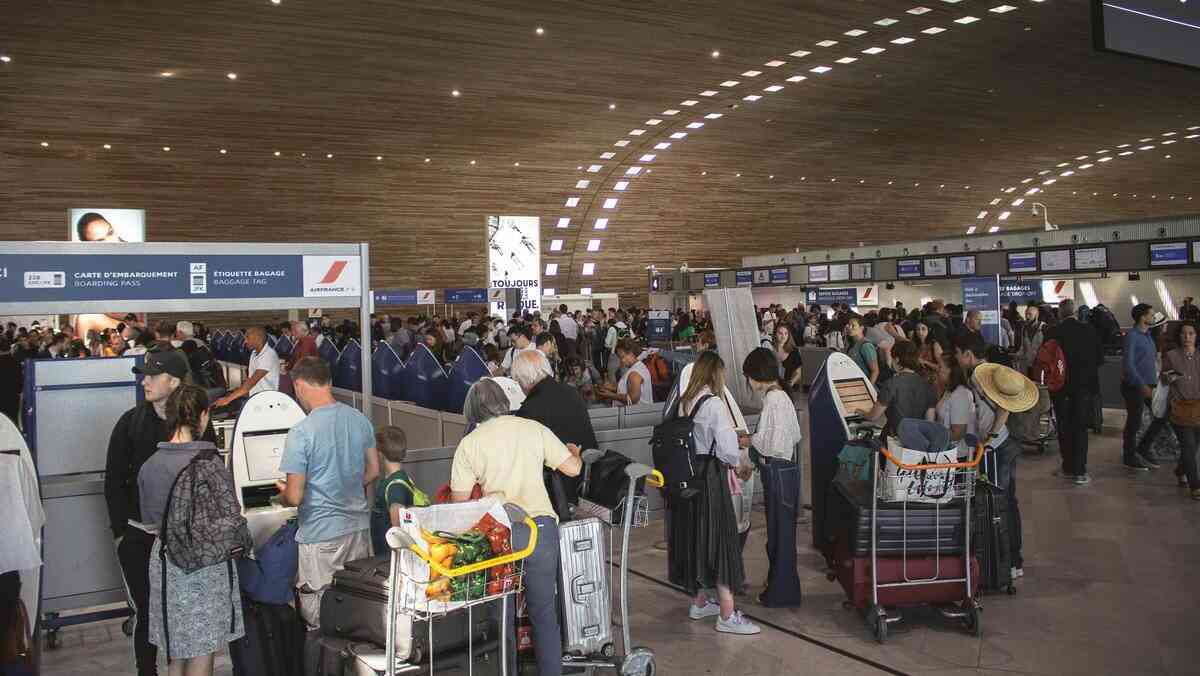
Truth & Goodness
04 January 2026


Zmień tryb na ciemny